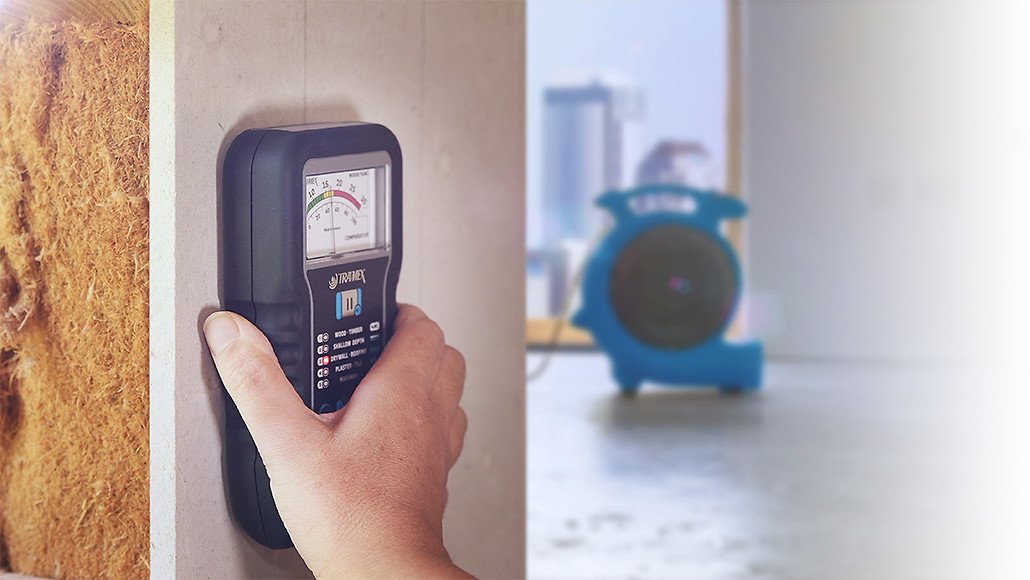When people think of home inspections, they often focus on the structural elements, plumbing, or electrical systems. However, one critical aspect that can be easily overlooked is moisture. Water damage can be a silent, hidden enemy, slowly eating away at your home’s foundation, walls, and even its overall integrity. This is where a moisture inspection comes into play. By identifying potential water issues early, you can prevent serious damage and costly repairs.
In this blog post, we’ll explore why a moisture inspection is essential, what it involves, the signs to watch for, and how it can protect your home from long-term damage.
Why Moisture Is a Silent Threat
Water is essential for life, but when it finds its way into places it shouldn’t be in your home, it becomes a serious threat. Moisture that accumulates in walls, floors, or ceilings can lead to a variety of issues, such as:
- Mold growth: Moist environments are breeding grounds for mold. Mold not only damages the structure but can also cause health problems, especially for those with respiratory issues.
- Structural damage: Over time, moisture can weaken wooden beams, drywall, and other construction materials. This may lead to sagging floors, warped walls, or even foundational damage.
- Electrical hazards: Water and electricity don’t mix. Excess moisture in your home can lead to electrical malfunctions or, worse, fires.
- Pest infestations: Damp environments attract pests like termites, which can cause even more structural damage.
Clearly, moisture isn’t something to take lightly. Addressing it early through a moisture inspection can save you time, money, and hassle in the future.
What Is a Moisture Inspection?
A moisture inspection is a specialized examination of your home to detect any unwanted water or moisture. It goes beyond a standard home inspection by focusing specifically on areas where water damage is likely to occur, such as:
- Basements and crawl spaces
- Bathrooms and kitchens
- Attics
- Around windows and doors
- The foundation of your home
What Does It Involve?
During a moisture inspection, an inspector uses advanced tools and techniques to detect moisture levels in your home. Some of the tools they may use include:
- Moisture meters: These devices measure the moisture content in various materials, such as wood and drywall. They can give you an accurate reading of how much moisture is present in a particular area.
- Thermal imaging cameras: These cameras detect temperature differences in your home, helping to identify areas where moisture may be trapped.
- Hydrometers: Hydrometers measure the humidity levels in the air, which can indicate whether moisture is present in hidden areas.
The goal is to locate any potential moisture problems before they turn into more significant issues. Once moisture is identified, the inspector will often recommend solutions, such as improving ventilation, sealing leaks, or repairing damage.
Signs You Might Need a Moisture Inspection
There are several warning signs that your home may have moisture problems. If you notice any of the following, it’s a good idea to schedule a moisture inspection:
1. Musty Odors
A persistent musty smell is often one of the first indicators of a moisture problem. It usually means mold or mildew is growing somewhere in your home, even if you can’t see it.
2. Water Stains or Discoloration
Water stains or discoloration on your walls, ceilings, or floors are a clear sign that water is seeping into areas it shouldn’t. Even small stains can indicate a much larger problem lurking behind your walls.
3. Warping or Bubbling
When moisture gets into materials like wood or drywall, it can cause them to warp or bubble. This is especially common in areas like bathrooms or basements.
4. Mold Growth
If you spot mold growing on your walls, floors, or ceilings, you need to act quickly. Mold spreads rapidly, and what starts as a small patch can quickly turn into a major problem. Mold is not only unsightly but also poses significant health risks.
5. Condensation on Windows
If you notice condensation frequently forming on your windows, especially in areas like the bathroom or kitchen, it could be a sign of high moisture levels in your home. This is often a precursor to more serious moisture problems.
6. Increased Pest Activity
Moisture attracts pests like termites, ants, and cockroaches. If you suddenly find an influx of pests in your home, it could be a sign of hidden moisture.
How a Moisture Inspection Can Protect Your Home
Regular moisture inspections are an essential part of home maintenance, helping to identify problems before they escalate. Here are a few ways a moisture inspection can protect your home:
1. Prevent Long-Term Structural Damage
Moisture is one of the leading causes of structural damage in homes. Left unchecked, it can weaken the foundation, walls, and floors, leading to costly repairs. By catching moisture early through an inspection, you can address the problem before it causes significant damage.
2. Avoid Mold Growth
Mold thrives in damp environments, and once it takes hold, it can spread rapidly. Mold not only damages your home but can also cause health problems, such as allergies and respiratory issues. A moisture inspection helps to identify areas where mold is likely to grow, allowing you to take preventive measures.
3. Protect Your Investment
Your home is likely one of your largest investments. Ignoring moisture problems can lead to decreased property value, especially if significant damage occurs. A moisture inspection ensures your home stays in good condition, protecting its value in the long run.
4. Reduce the Risk of Electrical Problems
Water and electricity are a dangerous combination. Moisture in areas with electrical wiring can lead to short circuits, fires, or other electrical hazards. A moisture inspection helps you identify areas where water is getting into your home, allowing you to fix the problem before it becomes a safety risk.
5. Improve Energy Efficiency
Moisture problems can also affect your home’s energy efficiency. For example, damp insulation is less effective, meaning your home will lose heat in the winter and stay warm in the summer. By addressing moisture issues, you can improve your home’s energy efficiency and reduce your utility bills.
How to Prevent Moisture Problems
While a moisture inspection is essential for identifying existing problems, there are steps you can take to prevent moisture issues from occurring in the first place:
1. Maintain Proper Ventilation
Ensuring that your home has adequate ventilation, especially in areas prone to moisture like bathrooms and kitchens, can help prevent moisture buildup. Exhaust fans and dehumidifiers can be particularly useful.
2. Seal Leaks Immediately
Leaky pipes, roofs, or windows should be addressed immediately to prevent water from entering your home. Even small leaks can lead to significant moisture problems over time.
3. Keep Gutters Clean
Clogged gutters can cause water to overflow and seep into your home’s foundation. Regularly clean your gutters to ensure that water is directed away from your home.
4. Inspect Your Home Regularly
Regular inspections of your home’s foundation, roof, and exterior can help you spot potential moisture problems before they escalate. Pay particular attention to areas where water is likely to accumulate, such as basements and crawl spaces.
5. Control Indoor Humidity
High humidity levels inside your home can lead to condensation and moisture buildup. Use a dehumidifier in areas that are prone to high humidity, such as basements or bathrooms, to keep moisture levels in check.
The Long-Term Benefits of a Moisture Inspection
While a moisture inspection may seem like an additional expense, it can actually save you money in the long run by preventing more costly repairs. Catching moisture problems early means you can address them before they cause significant damage, reducing repair costs and preserving your home’s value.
Furthermore, the peace of mind that comes from knowing your home is safe from hidden moisture damage is invaluable. A moisture inspection provides that assurance, allowing you to rest easy knowing your home is protected.
Conclusion: Don’t Underestimate the Power of Moisture
Moisture might seem harmless at first glance, but when it’s lurking in your walls or foundation, it can lead to severe damage over time. From mold growth to structural deterioration, the risks associated with moisture are real and costly.
Scheduling regular moisture inspections and taking preventive measures can help you safeguard your home from the hidden dangers of moisture. By staying proactive and addressing problems early, you’ll protect your home, your investment, and your family’s health.
Also, read this: How to Find the Best Home Inspectors for Your Peace of Mind




